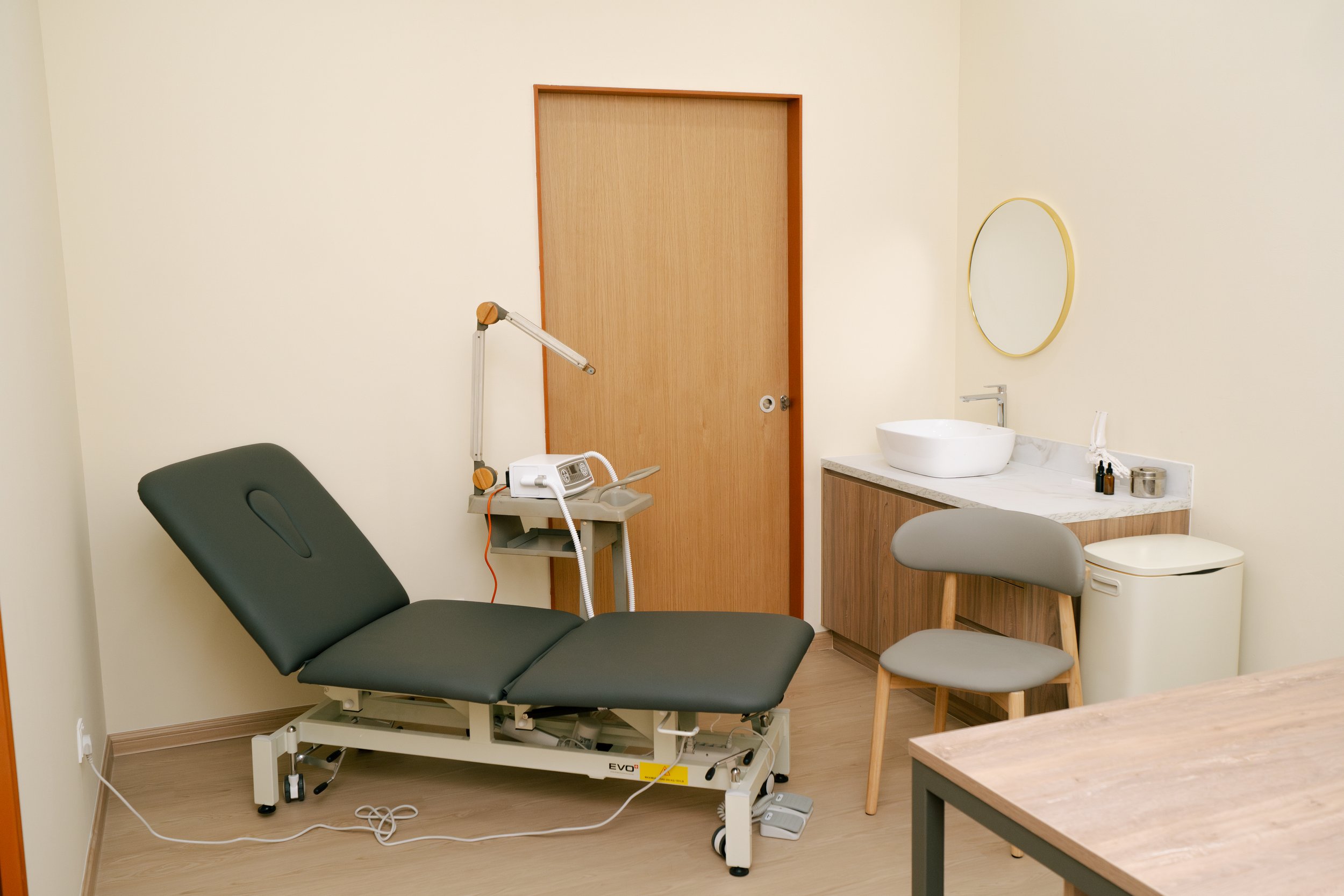
Osteoarthritis
What Is Osteoarthritis?
Osteoarthritis (OA) is the most common form of arthritis, often described as a "wear and tear" condition. It occurs when the protective cartilage that cushions the ends of your bones gradually deteriorates with age, overuse, or injury. As the cartilage wears down, bones rub against each other, causing pain, stiffness, swelling, and reduced joint function.
Osteoarthritis can affect any joint, but it's especially common in weight-bearing areas such as the knees, hips, feet, and ankles. It can develop slowly over years and significantly impact daily movement if left untreated.
Causes and Risk Factors
Osteoarthritis results from a combination of factors that lead to gradual joint degeneration. These include:
Overuse and Age-Related Wear
Daily use of joints causes gradual cartilage breakdown over time
Most common in adults over 40
Joint Injuries and Structural Abnormalities
Previous fractures, sprains, or ligament tears
Flat feet, bunions, or poor foot alignment increase joint stress
Genetics and Medical Conditions
Family history of osteoarthritis
Inflammatory conditions like rheumatoid arthritis or gout
Lifestyle and Occupational Risks
Jobs requiring repetitive movements or standing for long periods
Obesity increases pressure on joints
Poor footwear choices (e.g. hard soles, high heels)
Symptoms of Osteoarthritis
Osteoarthritis develops gradually and symptoms may vary in intensity. You may notice:
Aching joint pain (especially after activity or at the end of the day)
Stiffness, particularly in the morning or after rest
Swelling and tenderness in joints
Grinding, cracking, or clicking when you move
Reduced joint flexibility or range of motion
Joint instability or deformity in advanced stages
In the feet and lower limbs, OA commonly affects the big toe joint, midfoot, ankle, and knees.
Diagnosing Osteoarthritis
At KL Foot Specialist Podiatry, we begin with a comprehensive clinical assessment. We evaluate your medical history, symptoms, joint mobility, and gait (walking) patterns.
If needed, we will refer you for:
X-rays to assess joint space narrowing, bone spurs (osteophytes), and cartilage loss
Ultrasound if soft tissue damage is suspected
Accurate diagnosis allows us to create a tailored treatment plan that aligns with your lifestyle and health goals.
How We Treat Osteoarthritis
Our podiatrists offer non-surgical, evidence-based treatments that aim to:
Reduce joint pain and swelling
Improve function and mobility
Prevent or delay further joint degeneration
Custom Foot Orthotics
Custom orthotics help offload pressure from painful joints, support optimal foot alignment, and improve walking mechanics. This reduces strain on affected areas and slows further joint damage.
DolorClast® High Power Laser
Laser therapy is highly effective for arthritis-related pain. It works by stimulating healing at the cellular level, reducing inflammation, and increasing circulation. It’s non-invasive, pain-free, and safe.
Footwear Advice & Modifications
Wearing proper shoes can dramatically reduce OA symptoms. We recommend cushioned, shock-absorbing footwear with good arch support. We can also make custom footwear modifications if needed.
Shockwave Therapy
This non-invasive treatment stimulates blood flow and collagen production, which helps heal damaged tissues and reduce pain in arthritic joints.
Physical Therapy & Rehabilitation
We’ll prescribe a targeted stretching and strengthening program to maintain or improve joint range of motion, stability, and strength. This helps prevent falls, stiffness, and joint instability.
Activity & Lifestyle Modifications
We guide you in modifying daily activities and training programs to minimise joint stress while keeping you active. We often recommend switching to low-impact activities like cycling or swimming.
Ankle-Foot Orthotics (AFOs)
For advanced osteoarthritis, AFOs help stabilise and offload painful joints, enhancing mobility and walking efficiency. These are custom-made for your unique anatomy.
Other Supportive Therapies
Weight management guidance
Referral for pain management or injections if needed
What Happens If You Ignore Osteoarthritis?
Without treatment, osteoarthritis can gradually worsen and cause lasting damage. Potential complications include:
Joint deformity and limited mobility
Increased risk of falls due to instability
Bone spurs that irritate surrounding tissues
Secondary issues like bursitis or tendonitis
Chronic pain impacting daily life
In severe cases, joint replacement surgery may be needed
Prevention
You can reduce your risk or slow the progression of osteoarthritis with these steps:
Maintain a healthy weight to reduce pressure on weight-bearing joints
Wear supportive, shock-absorbing footwear
Stay active with low-impact exercises
Warm up and stretch before physical activity
Avoid repetitive joint strain or high-impact activities
Seek early treatment for joint injuries or pain
When to See a Podiatrist
Book an appointment if you notice:
Persistent joint pain, especially in your feet, ankles, or knees
Joint stiffness that affects daily movement
Swelling or tenderness near joints
Changes in your gait or foot structure
Difficulty walking or exercising due to joint discomfort
At KL Foot Specialist Podiatry, our experienced team is ready to help you manage your osteoarthritis and reclaim your comfort and mobility.
Ready to Find Relief from Osteoarthritis?
Whether your joint pain has just started or has been affecting your daily life for years, our podiatrists at KL Foot Specialist Podiatry are here to help. We combine advanced therapies and personalised care to reduce pain, improve movement, and support your joint health long-term.
Call us or book your consultation online to start your journey to pain-free movement.
